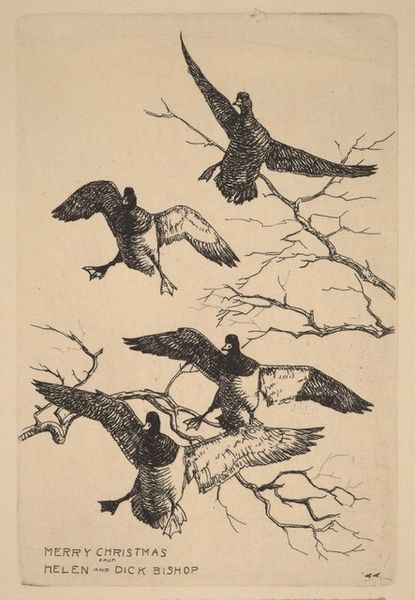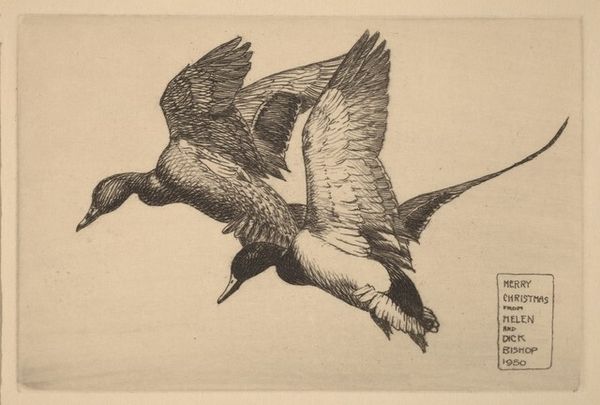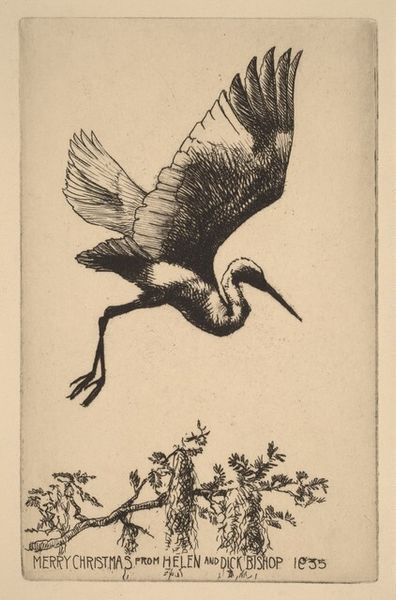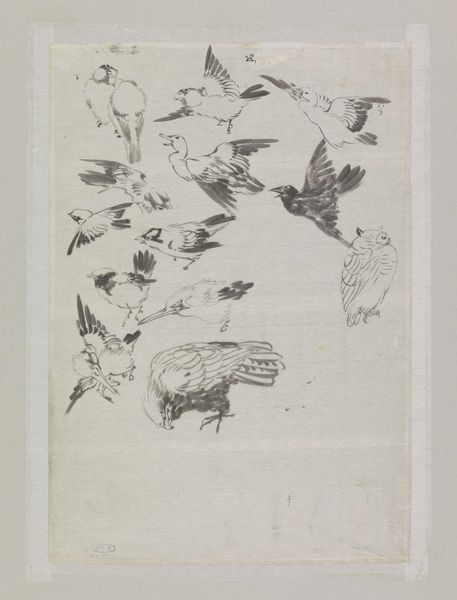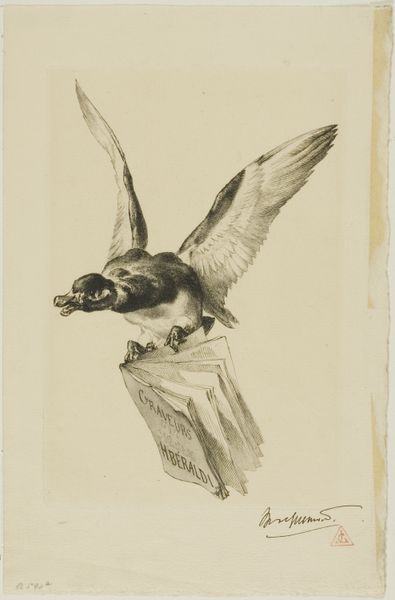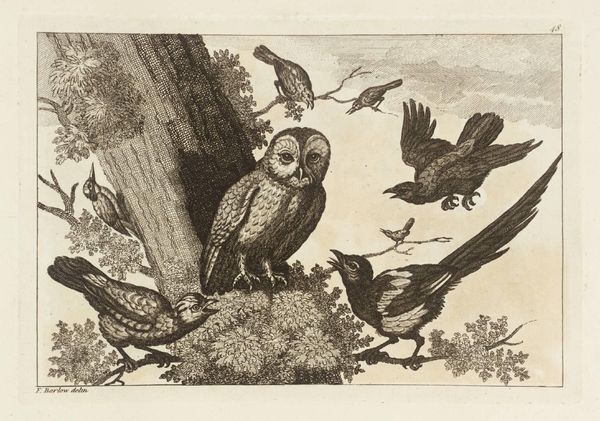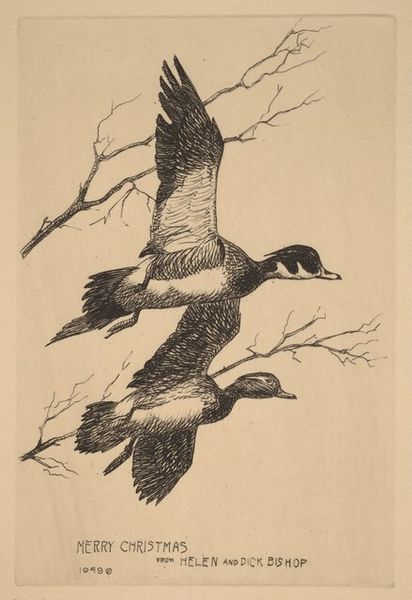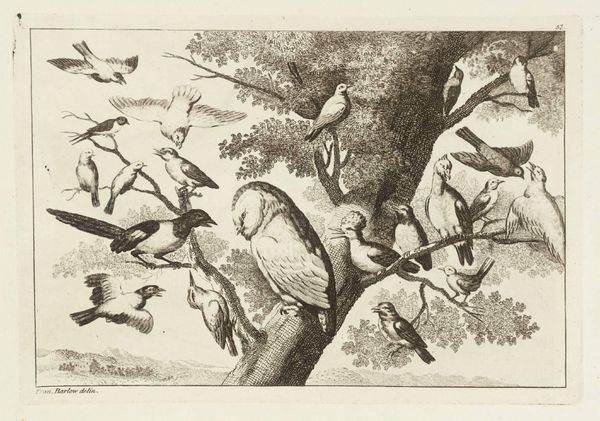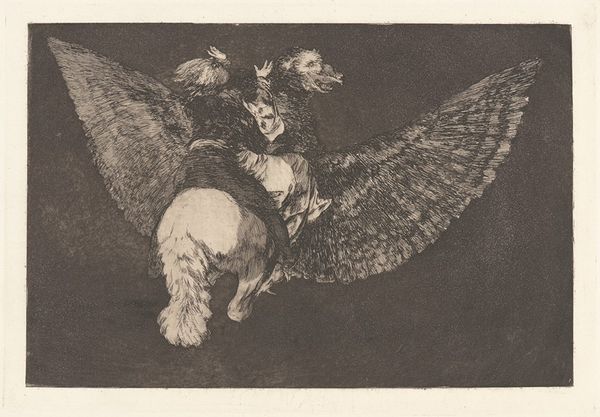
drawing, print, etching, paper, ink, engraving
#
drawing
# print
#
etching
#
landscape
#
figuration
#
paper
#
ink
#
line
#
engraving
Copyright: National Gallery of Art: CC0 1.0
Editor: So, here we have "Christmas Card from Helen and Dick Bishop" made by Richard Evett Bishop in 1973. It’s an etching in ink on paper and feels like a traditional landscape with a touch of whimsy. What compositional elements stand out to you? Curator: Immediately, the linear quality captures my attention. Bishop masterfully uses line to delineate form and texture. Observe how the density of lines creates darker tones, giving volume to the ducks and suggesting the fluffy texture of the clouds. Notice also the interesting balance achieved between positive and negative space, the ducks dynamically interrupting the negative space of the paper. Editor: Yes, the way the lines create movement is compelling. It feels very dynamic. What's your interpretation of the formal interplay between the subject matter and technique? Curator: The etching technique lends itself well to the subject matter. The precise lines enable Bishop to capture the anatomy of the birds with accuracy, while the inherent quality of the etched line imbues the image with a sense of spontaneity. Also the choice of monochrome emphasizes the essential forms and structures. How does this formal reading impact your understanding of its message as a holiday greeting? Editor: That's insightful! I hadn't considered how the choice of medium amplified the overall effect. Knowing more about the artistry definitely deepens my understanding and appreciation for what might seem at first glance to be a simple image. Curator: Precisely! Analyzing the formal elements provides a richer context for interpretation. Editor: Thanks for showing me how close visual analysis enriches our experience. I'll definitely approach artworks differently now.
Comments
No comments
Be the first to comment and join the conversation on the ultimate creative platform.
